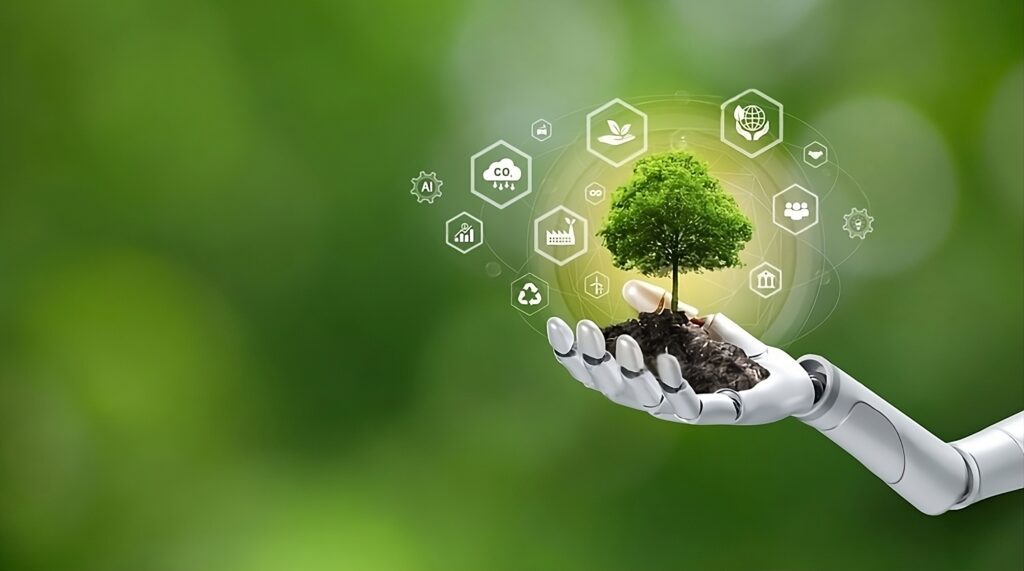
The question what is green technology sits at the center of climate, energy and growth. Markets expand. Cities swell. Resource pressure rises.
So, policy makers, founders and operators now ask which tools reduce harm while lifting productivity. That is where green tech steps in. It covers power, transport, buildings and materials. It also blends software with hardware so results scale and because environmental technology solves real problems, investors keep backing it.
From cleaner factories to smarter grids and sustainable technologies in farms, we see a new operating system for industry. Even green manufacturing enters the mainstream as supply chains get measured and optimized.
Table of Contents
ToggleWhat is Green Technology?
Start with a clean definition. When teams ask what is green technology, they want methods that cut emissions, protect water, soil and keep materials in use longer. The scope spans products, processes and platforms. It also spans policy and finance. In short, the field aims for the same thing every good system does: better outcomes with fewer inputs.
At a high level, green tech lowers the environmental cost of energy and industry. Environmental technology monitors air, soil and water and turns signals into action. Meanwhile, sustainable technologies redesign products so they can be reused, repaired or recycled. And green manufacturing shifts plants toward low-energy equipment, clean heat, and circular material flows.
Core building blocks include:
- Renewable energy systems such as solar, wind, geothermal and small hydro.
- Smart grids and storage that move electricity efficiently and store it safely.
- Waste reduction and recycling that turn output into new inputs.
- Process upgrades in factories that cut heat loss, scrap and downtime.
FACT: Global clean-energy investment crossed 1.7 trillion dollars in 2023 and continued to outpace fossil investment into 2024–2025, a signal that capital now favors scalable, lower-carbon systems.
Why this field matters now
It is not only about targets. It is about resilience and cost. Firms that act early lock in cheaper energy and predictable supply. Communities that act early get cleaner air, safer water and jobs. And governments that act early attract new manufacturing.
First, climate goals need real reductions. Environmental technology makes those reductions measurable and verifiable. Second, resource security matters. Countries that use sustainable technologies stretch water, minerals and land. Third, customers vote with their wallets. Brands that adopt green tech gain trust and keep share in tight markets. Finally, risk drops. Cleaner processes mean fewer compliance surprises and fewer outages.
Example: A midsize food processor swapped steam traps, added heat recovery, and replaced open-loop washdowns. Gas use fell 23% in six months. Water use fell 18%. Payback clocked in under two years, while downtime improved.
So, when executives ask what is green technology for our sector, the answer ties to margin, growth and risk not just ideals.
Core types and how they work together
You cannot decarbonize with one tool. You use a kit. Here are the major pieces and how they connect when you build a real program.
Renewable energy
Solar and wind now anchor new capacity in many grids. Add geothermal where geology helps. Add small hydro where rights allow. Tie all of it to smart inverters and flexible demand.
Efficiency and electrification
The cheapest kilowatt-hour is the one you never use. LEDs, variable-speed drives, and heat pumps cut loads fast. Then you electrify heat and mobility so renewables can power them.
Storage and flexibility
Batteries stabilize fast swings. Thermal storage shifts heat. Software shifts load. Together they let you run higher shares of variable generation.
Circular materials and waste
Smarter sorting, chemical recycling and composting keep value in the loop. Upstream design reduces mixed materials that are hard to recover.
Green manufacturing
Plants adopt low-carbon fuels where heat runs hot, recover waste heat, switch to closed-loop water and add continuous monitoring so operators act before losses grow.
PRO TIP: Map energy, materials and water on the same flow diagram. You will spot easy wins like reclaiming low-grade heat to pre-warm rinse water before you chase complex projects.
When you pull these levers together, you build a system and when teams define what is green technology in their own words, they usually mean this kind of joined-up plan.
Table: Major Categories of Green Technology
| Category | Focus Area | Example Solutions |
| Renewable energy | Power generation from clean sources | Solar PV, onshore wind, geothermal |
| Energy efficiency | Lowering consumption and losses | LEDs, variable-speed drives, heat pumps |
| Waste & recycling | Resource recovery and reuse | Composting, chemical recycling |
| Green manufacturing | Cleaner production and circular inputs | Closed-loop water, heat recovery |
| Sustainable agriculture | Eco-efficient food systems | Drip irrigation, precision fertilizing |
Everyday applications that touch all of us
The field is no longer niche. We see green tech in daily life.
At home, induction stoves, smart thermostats, and better insulation cut bills. On roads, electric buses and trucks drop noise and soot. In cities, building codes shape roofs, windows and chillers. On farms, sensors steer water and nutrients to the plants that need them most. And in industry, software ties sustainable technologies to maintenance, so fixes land before failures.
When people ask what is green technology in practical terms, point to these small, visible shifts. They add up.
Study: City programs that pair building retrofits with transit electrification show compound benefits: lower peak demand, better air and fewer hospital visits tied to pollution. Those gains persist year over year.
Meanwhile, environmental technology brings data into the open. Air-quality sensors guide street sweeping and traffic rules. Water meters catch leaks. Waste meters track contamination at the bin. Then procurement changes because you can measure the cost of throwing value away.
Benefits that show up on the P&L and in the air
Environmental protection
Cleaner power and processes cut CO₂, NOₓ, SOₓ, and particulates. Rivers recover. Soils hold more carbon and water.
Economic strength
Once installed, renewables run on free fuel. Efficiency keeps paying as rates rise. And sustainable technologies reduce input volatility by reusing materials you already bought.
Innovation and jobs
New factories, installers and service firms grow around these systems. And green manufacturing needs engineers, operators and analysts who tune performance.
Social gains
Fewer asthma spikes. Better indoor air. Safer heat waves. Stronger grids during storms.
Survey: Labor and industry groups report durable job growth in renewables, grid upgrades, building retrofits, and circular materials roles that pay well and resist offshoring.
Because these wins stack, the early movers widen their lead. And because the wins are visible, copycats follow.
Sector deep dives
Transportation
Electric vehicles dominate light-duty sales in many markets and push them into vans and trucks. Charging hubs pair with depot batteries. Software smooths loads. Hydrogen appears where duty cycles run heavy and long.
Energy
Utility-scale solar and wind costs keep sliding. Storage prices track down too. Grid operators use analytics to forecast, dispatch and protect. Rural microgrids link farms, clinics and schools.
Agriculture
Satellite maps and drones guide inputs. Drip systems cut water use. Feed additives lower methane. Seeds and soil practices boost yield with less fertilizer. These are plain examples of sustainable technologies that pay for themselves.
Construction
Codes push for tighter envelopes, heat pumps and smart controls. Reused steel and low-carbon concrete shrink footprints. Materials tracking platforms make provenance transparent.
Manufacturing
Here green manufacturing shines. Plants swap solvent baths for aqueous systems, recover solvents with membranes, and route scrap back into the process. Sensors watch pumps and ovens in real time, then flag drift so crews adjust before quality slips.
Insight: Operators trust what they can see. Dashboards that show losses like dollars and hours not just kilowatts drive adoption across shifts.
So, across sectors, what is green technology becomes a playbook: use less, reuse more, electrify what you can, clean the rest.
A practical roadmap for leaders
Ambition is cheap. Execution wins. Use this plan to move from talk to traction.
- Baseline: Measure energy, water, waste and emissions. Split by process and site. You cannot improve what you cannot see.
- Prioritize: Rank projects by payback, risk and ease. Take the fast wins first. Keep a few bold bets in the pipeline.
- Finance: Tap utility rebates, green bonds, leases and performance contracts. Blend sources to neutralize capex bottlenecks.
- Procure: Specify efficiency in every RFP. Ask vendors for take-back programs and recycled content.
- Pilot: Prove value at one site. Then roll out. Document steps so the next site moves faster.
- Operate: Train crews. Reward savings. Set alarms for drift.
- Report: Share numbers internally and externally. Credible data earns budgets and trust.
Along the way, join projects. No firm fixes a grid or a river alone. Partnerships speed learning and unlock economies of scale.
Barriers and the fixes that work
You will face skeptics. You will hit snags. Plan for both.
- Upfront cost: Use financing that pays from savings. Or phase projects so early wins fund later ones.
- Data gaps: Install meters and sensors in week one. Environmental technology is your friend here.
- Split incentives: If tenants pay the bills but owners buy the gear, write shared-savings clauses into leases.
- Change fatigue: Start small and celebrate wins. Crews back what helps their day.
- Supply constraints: Pre-qualify multiple vendors. Standardize parts across sites.
- Skills: Train and certify in-house teams. Pair new hires with veterans. Build a ladder so people grow with the program.
Meanwhile, be clear about what is green technology for your business. Keep scope tight. Say no to vanity projects that soak in time and fail to move numbers.
Metrics, verification and ROI
Numbers settle debates. Pick a short list that proves value and protects credibility.
- Energy: kWh per unit produced, peak demand, load factor.
- Water: liters per unit, reuse rate, leak response time.
- Materials: scrap rate, recycled content share, landfill diversion.
- Emissions: Scope 1 and 2 now; Scope 3 as data matures.
- Reliability: downtime hours, mean time between failures.
- Financials: payback months, IRR, risk-adjusted savings.
Add third-party verification where claims matter. Audited results travel better inside boardrooms and during procurement.
And remember what is green technology without proof is just branding. Proof turns pilots into standards.
Policy, finance and incentives use
Laws and incentives shift fast. But they usually point the same way: toward cleaner, smarter systems.
Look for tax credits on renewables, storage, and heat pumps. Scan grants for industrial efficiency and green manufacturing retrofits. Watch public-private funds for circular materials and grid modernization. Finally, work with utilities. They want lower peaks and fewer outages. Your projects help both.
Procurement also matters. Big buyers can demand low-carbon steel, recycled plastics or high-efficiency motors. When buyers align requests, markets respond.
People, culture and operations
Technology gets headlines. People make it work. Set clear goals. Share dashboards. Train everyone from operators to finance teams. Reward ideas that save energy, water or materials. And keep communication plain. When people see where waste lives, they fix it.
A culture like this outlasts incentives and leadership changes. It also travels across sites and countries. That is how sustainable technologies scale inside real companies.
Future trends
Trends help when they translate into value.
- AI + controls. Algorithms tune boilers, chillers and lines in real time. Savings hold even as conditions change.
- Industrial heat pumps. New models reach higher temperatures, unlocking cleaner heat for food, paper and chemicals.
- Long-duration storage. Flow batteries, thermal blocks and hydrogen smooth multi-day dips in wind and sun.
- Circular chemistry. Solvent-free processes and low-toxicity catalysts cut hazards and waste.
- Nature-based solutions. Wetlands, urban forests and living shorelines protect assets while cooling cities.
- Digital product passports. Materials carry histories so reuse and recycling get easier at the end of life.
And yes, green tech will keep blending with software. Dashboards will give way to automation. Alerts will trigger actions. People will handle exceptions and strategy, not knobs and dials.
Table: Traditional Practices vs Green Technology
| Area | Traditional Practices | Green Technology Approach |
| Energy | Fossil fuels, steady high emissions | Renewables, storage, flexible demand |
| Manufacturing | Linear use, high scrap and waste | Green manufacturing, circular inputs, clean heat |
| Agriculture | Heavy water and chemical inputs | Precision tools, soil health, closed loops |
| Construction | Concrete-heavy, high embodied carbon | Low-carbon materials, passive design, reuse |
| Transport | Diesel fleets, local air pollution | EVs, smart routing, hydrogen for hard-to-electrify |
By the time teams internalize what is green technology, they realize it is a management system. Tools change. Habits change. Results stick.
Risks, ethics and transparency
No transition is risk-free. Mining for batteries and motors raises real concerns. Wind and solar need land. Recycling can misfire if systems ignore labor and safety.
So, the best programs publish supply maps, audit sites and pay fair prices. They also measure end-of-life outcomes and design for repair.
Transparency builds trust. It also exposes weak spots you can fix. That is mature environmental technology at work.
Final Thoughts
In the end, what is green technology is a practical playbook, not a slogan. You use green tech to cut waste and cost, rely on environmental technology to measure and verify change.
You deploy sustainable technologies to keep value flowing in circles, not lines and you adopt green manufacturing to clean heat, water and materials at the core of production. Pick a baseline. Prioritize fast wins. Finance the rest. Then publish results and repeat.
With that rhythm, the air clears, the grid steadies, and margins rise. The firms and cities that move now will lead the next decade and they will do it with cleaner, smarter systems that last.


